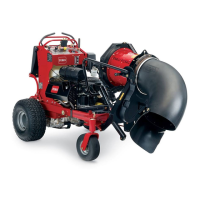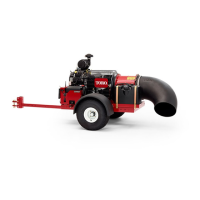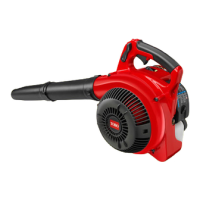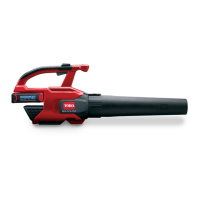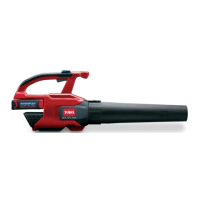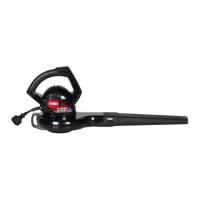ProForce Debris Blower
Page 4 -- 24
Electrical System
Battery Testing
1. Conduct a hydrometer test of the battery electrolyte.
IMPORTANT: Make sure the area around the cells is
clean before opening the battery caps.
A. Measure the specific gravity of each cell with a
hydrometer. Draw electrolyte in and out of the
hydrometer barrel prior to taking a reading to warm--
upthehydrometer.Atthesametimetakethetem-
perature of the cell.
B. Temperature correct each cell reading. For each
10
o
F(5.5
o
C) above 80
o
F(26.7
o
C) add 0.004 to the
specific gravity reading. For each 10
o
F(5.5
o
C) be-
low 80
o
F(26.7
o
C) subtract 0.004 from the specific
gravity reading.
Example: Cell Temperature 100
o
F
Cell Gravity 1.245
100
o
F minus 80
o
F equals 20
o
F
(37.7
o
C minus 26.7
o
C equals 11.0
o
C)
20
o
F multiply by 0.004/10
o
F equals 0.008
(11
o
C multiply by 0.004/5.5
o
C equals 0.008)
ADD (conversion above) 0.008
Correction to 80
o
F(26.7
o
C) 1.253
C. If the difference between the highest and lowest
cell specific gravity is 0.050 or greater or the lowest
cell specific gravity is less than 1.225, charge the bat-
tery. Charge at the recommended rate and time giv-
en in Charging or until specific gravity of all cells is
1.225 or greater with the difference in specific gravity
between the highest and lowest cell less than 0.050.
If these charging conditions can not be met, replace
the battery.
2. Perform a high --discharge test with an adjustable
load tester.
This is one of the most reliable means of testing a battery
as it simulates the cold--cranking test. A commercial bat-
tery load tester is required to perform this test.
CAUTION
Follow the battery load tester manufacturer’s
instructions when using a battery load tester.
A. Check the voltage across the battery terminals
prior to load testing the battery. If the voltage is less
than 12.4 VDC, recharge the battery.
B. If the battery has r ecently been charged, remove
the battery surface charge before performing the
load test. Disconnect the engine fuel stop solenoid to
prevent the engine from starting. Engage the starter
motor for 10 seconds to remove battery surface
charge. Reconnect the fuel stop solenoid.
C. Make sure battery terminals are free of corrosion.
D. Measure the temperature of the center battery
cell.
E. Connect a battery load tester to the battery termi-
nals following the load tester manufacturer’s in-
structions. Connect a digital multimeter to the
battery terminals.
F. Apply a test load of 270 amps (one half the Crank-
ing Performance rating of the battery) for 15 se-
conds.
G. Take a voltage reading aft er 15 seconds, then re-
move the load.
H. Using the table below, determine the minimum
voltage for the cell temperature reading:
Minimum
Voltage
Battery Electrolyte
Temperature
9.6 70
o
F(andup) 21.1
o
C(andup)
9.5 60
o
F 15.6
o
C
9.4 50
o
F 10.0
o
C
9.3 40
o
F 4.4
o
C
9.1 30
o
F -- 1 . 1
o
C
8.9 20
o
F -- 6 . 7
o
C
8.7 10
o
F -- 1 2 . 2
o
C
8.5 0
o
F -- 1 7 . 8
o
C
I. If the test voltage is below the minimum, replace
the battery. If the test voltage is at or above the mini-
mum, return the battery to service.
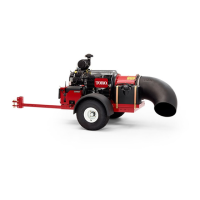
